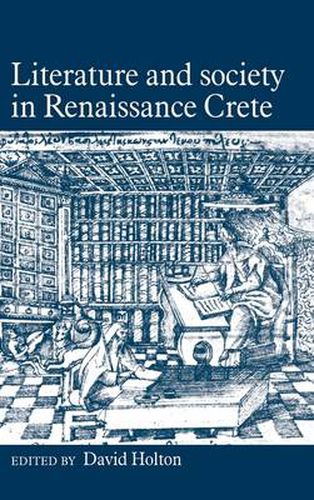Readings Newsletter
Become a Readings Member to make your shopping experience even easier.
Sign in or sign up for free!
You’re not far away from qualifying for FREE standard shipping within Australia
You’ve qualified for FREE standard shipping within Australia
The cart is loading…






This book presents a comprehensive study of the literature of the Cretan Renaissance and relates it to the historical, social and cultural context. Crete, ruled by Venice from 1211 to 1669, responded to the stimulus of the Renaissance in a body of narrative, personal and dramatic poetry, written in the Cretan dialect, and now regarded as an important influence on Modern Greek literature. These Cretan literary works are part of a more general phenomenon of cultural fusion which occurred in Crete and can be observed in art and architecture, as well as in learning. The historical background is related to an examination of the structure of Veneto-Cretan society, while the central chapters concentrate on the small but distinguished group of literary texts which have survived, among which drama is especially important, with examples of tragedy, comedy, pastoral and religious drama. Finally, there is a pioneering study of the interrelations between popular poetry and literature.
$9.00 standard shipping within Australia
FREE standard shipping within Australia for orders over $100.00
Express & International shipping calculated at checkout
This book presents a comprehensive study of the literature of the Cretan Renaissance and relates it to the historical, social and cultural context. Crete, ruled by Venice from 1211 to 1669, responded to the stimulus of the Renaissance in a body of narrative, personal and dramatic poetry, written in the Cretan dialect, and now regarded as an important influence on Modern Greek literature. These Cretan literary works are part of a more general phenomenon of cultural fusion which occurred in Crete and can be observed in art and architecture, as well as in learning. The historical background is related to an examination of the structure of Veneto-Cretan society, while the central chapters concentrate on the small but distinguished group of literary texts which have survived, among which drama is especially important, with examples of tragedy, comedy, pastoral and religious drama. Finally, there is a pioneering study of the interrelations between popular poetry and literature.